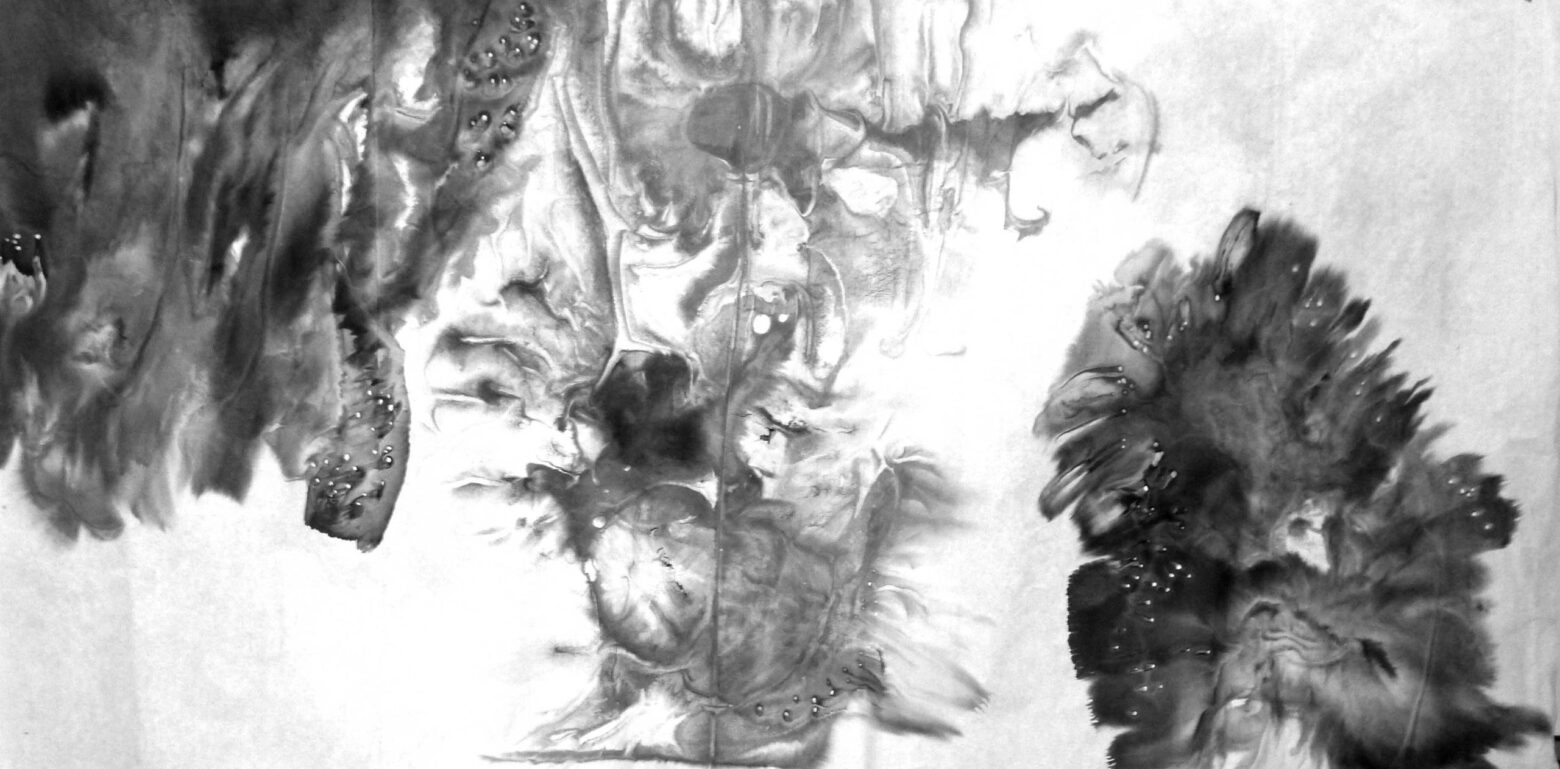The work of art calls; the viewer, the listener, the reader responds. The viewer’s senses respond to the seduction of color and light, scale and form, the place of the work in a gallery, a museum, or home (or even the dump—perhaps a shining treasure in the trash). The listener’s body responds to rhythm and melody, to vast chords and complex orchestrations. The reader’s mind responds to the sound of words that bring a lifetime of memory and anticipation. Yes, memory, that is the mind’s response to the work of art’s seduction of the senses. We see, hear and read now, but all of that is in the context of a lifetime of memory. So Ming Ren’s work calls, and the response is as different for every receiver as are the unique memories of every person.
What have you seen of Chinese painting, what knowledge and experience do you bring to the table of Ming Ren’s art? What have you seen and lived of the world and its places, what have you known of your own fate and destiny, of what happened to you and what you made of it? Ming Ren’s paintings call to us of these things, and we must listen to our responses.
One day at an exhibition of Ming Ren’s work, I spent much time not only hearing the calling of so many of the works, but also listening to my responses—and some responses were in turn calls sent back to the works themselves for affirmation or denial, adaptation and enlargement.
There were several paintings together, two smaller and one the second largest in the exhibition…
The walls of the cave… seeing the world as new and the world as forever. The walls viewed and splattered, blood and soot, marks and lights. We always project our own dreams and nightmares… Keep quiet, let the cave speak its story.
There were five scrolls together, taller far than I…
Canyon walls… it is only beauty calls us to the stains, crevices and cracks of a long journey down a river between the high, warm walls of so many millions of years…
Thou shalt remain in midst of other woe than ours,
A friend to man to whom thou sayest,
“Beauty is truth, truth beauty—
That is all ye know on earth, and all ye need to know.”
Beauty was enough for Keats’ Grecian urn; and it is enough for a group of scrolls to call a response from the music of the memory of Buddhist caves in the walls of the Yellow River. Yet, if beauty is enough for the music of memory, is it enough for the painting of now? Open your eyes and see, open your ears and hear and reading your soul will know beauty may be also for the painting of now.
Three scrolls much taller than I in black ink with touches of red…
Is it true there may be always somewhere unknown in personal memory a recollection of the high values of long ago? And as the artist today chooses among a near infinity of accidents in his work, does he sometimes choose those which remember the works of masters dead a thousand years?
In a global world, each great culture leaves in its depths marks of how to live, what to value and how to die. Thus Fan K’uan’s 11th Century Travelers among Streams and Mountains—calling in Ming Ren’s three scrolls for our memories of a journey never taken among streams and mountains to a half hidden temple facing a slender waterfall, and from that temple in a misty valley calling us to Ming Ren’s cosmos in the sky, calling for our travel in the perpetual knot and unknot of the coming to be and passing away of stars.
Look, look at the work of Ming Ren and hear, hear its calling; listen, listen to the long far echo of your own life, your own response to his works’ unending call.
—Fred Martin
Emeritus Vice President and Dean of Academic Affairs
San Francisco Art Institute
September 2009.
